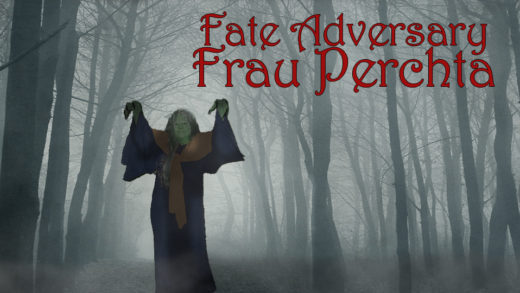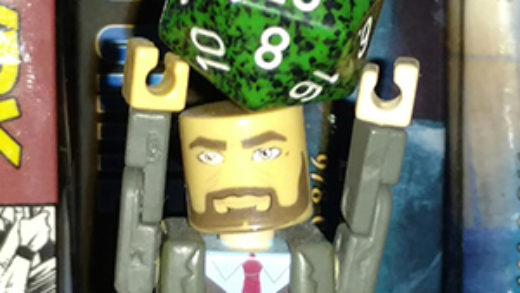Some people just want to watch the world burn. Others are out there, actively setting the charges. These trap makers, grenade-flingers, and saboteurs are called demolitionists. This Starfinder archetype allows player characters to focus on setting mines, handling grenades, and rigging (or disabling) explosives.
Demolitionist (Archetype)
Explosive devices, like grenades, are often thought of as messy and uncompromisingly dangerous. Some individuals put forth the time and training to maximize the effectiveness of the explosions, to properly contain and control them. These individuals are demolitionists. Some demolitionists act as saboteurs and trap makers. Others act more directly in combat, utilizing drones as bombers or lobbing explosives into combat.
Demolitions gain Engineering as a class skill, even if the class did not previously grant the skill. Demolitionists tend to be mechanics and operatives, but there are also soldiers and technomancers who rely on explosions as a means to their goals.
Alternate Class Features
The demolitionist grants alternate class features at 1st, 3rd, 5th, 9th, 12th, and 20th levels.
1st Level: Explosive Expert (Ex)
You increase the range increment of your thrown grenades by 5x your Strength bonus. In addition, you’re able to salvage enough materials to create a grenade, mine, or other explosive device without paying for it. Creating an explosive takes 10 minutes. You can create any explosive whose item level is less than or equal to your level, but this explosive is unstable and only you can use it effectively. If anyone else tries to use the explosive, it is a dud. You can have only one active explosive created by this ability at one time (if you create a new explosive using this ability, the old explosive no longer works).
[Explosive Expert is taken almost whole cloth from the “Grenade Expert” write-up in the Bombard fighting style for Soldier, modified only to allow any type of explosive device.]
3rd Level: Defuser (Ex)
Your knowledge of explosives allows you to study a bomb or other explosive and defuse it at with a +5 to the your Engineering level. Note that defusing will still take time (a number of rounds equal to the level of the explosive) and thrown grenades cannot be defused unless they are set at a delayed blast or are triggered with a detonator. In addition, you can now carry or set up to 2 explosives created using the Explosive Expert ability.
5th Level: Delayed Blast (Ex)
You can quickly modify your explosives (purchased or created) to add a timer to an explosive even within the heat of battle. Adding a timer to an explosive requires 1 round, as well as an existing (purchased or created) explosive and a timer detonator (see Weapons and Equipment, below). In addition, you can now carry or set up to 3 explosives created using the Explosive Expert ability.
9th Level: Pinpoint Structural Weakness (Ex)
You have a knowledge of structural engineering and can spend a round examining a room or blueprints to determine where an explosive will do the most structural damage. A subsequent round of examination will grant the knowledge of how much and what type of explosive will be required for either weakening or destroying the structure. Depending on the size and scale of the room, an Int roll may be required (GM’s discretion). This knowledge may also be used to set explosives to breach doors or locks. In addition, you can now carry or set up to 6 explosives created using the Explosive Expert ability.
13th Level: Explosives Acumen (Ex)
You increase the DC to avoid attacks you make using weapons with the explode special property by 1. You reduce the amount of any damage you take from any weapon with the explode special property by an amount equal to your Strength, Constitution, or Dexterity bonus (whichever is highest). In addition, you can now carry or set up to 8 explosives created using the Explosive Expert ability.
[Explosives Acumen is modified from the “Explosives Acumen” write-up in the Bombard fighting style for Soldier to better accommodate for other classes.]
20th Level: Chained Explosives (Ex)
You can combine lower-level explosives to create higher-level explosives. As part of creating an explosive you can spend 1 Resolve Point to add a second explosive damage type to your crafted explosive. The total combined levels of damage cannot exceed your level and the explosive range will be the lower of the two explosives. For example, you could create a Stickybomb Shock Grenade III that entangles for 2d4 rounds while exploding for 3d12 Energy damage in a 15ft radius. In addition, you can now carry or set up to 12 explosives created using the Explosive Expert ability.
It was brought to my attention on Facebook that the level scheme doesn’t fully follow Starfinder’s standard archetype leveling. I used a lot of my feature structures to overlap/replace with the Soldier’s Bombard fighting style features. For more “by the book” play, I suggest changing the feats to the following level structure:
2nd Level: Explosive Expert (Ex)
4th Level: Defuser (Ex)
6th Level: Delayed Blast (Ex)
9th Level: Pinpoint Structural Weakness (Ex)
12th Level: Explosives Acumen (Ex)
18th Level: Chained Explosives (Ex)
Weapons and Equipment
The Starfinder core book lists most explosive devices as “grenades,” but their uses can be modified for bombs or mines, with the primary difference being that bomb are not thrown, but placed. For the sake of simplicity and standardization, additional explosive damage types are also written here as “grenades.”
Grenades
This introduces three new explosive types to a Starfinder’s arsenal.
Acid Grenade
Acid grenades are equivalent in level, price, and damage to Incendiary grenades, replacing the Fire damage type with Acid. (So, Acid Grenade I would be a level 2 grenade, costing 375 and with the effect of Explode: 1d6 A, 1d4 burn, 5ft.)
Flechette Grenade
Flechette grenades are equivalent to Frag grenades in level, price, and damage, but replace slashing instead of piercing damage.
Foam Grenade
The foam grenade does no damage, but is used to put out fires and suppress energy damage. There is only one level of foam grenade, costing 150 credits. Throwing range is 20 ft. and any lasting physical damage energy effects (burning, freezing, tangled, etc.) in a 20 ft. are reduced by 1d6 rounds. This does not apply to being blinded or deafened as those effect cannot be suppressed by foam. Likewise, bleeding or crippled effects are similarly unaffected by a foam grenade.
Other Detonator/Trigger Types
While the core Starfinder book lists button-push detonators, these additional detonator types allow a character, using the Arm Explosive rules in Engineering, to set different types of explosive traps. While costs vary, all detonator types have a bulk of L, capacity of 5, and may only be used once (1/use). Generally, any set explosives can be noticed with a Perception of DC 33.
Physical Tripwire
This hairline piece of wire extends up to 10 ft., and sets an explosive (usually hidden or obscured) to detonate once the wire is tugged or breached. Physical tripwires make an explosive easier to notice and reduce the difficulty to notice the bomb at a Perception DC of 28.
Cost: 100 credits
Pressure Plate
Pressure plates are the most common form of setting an explosive to act as a mine. The explosive must be hidden just below the environment surface and the pressure plate can be set to only act at a specified weight. Note that because the explosive must sit under a surface, this type of detonator does not work on a metal surface, such as a ship’s deck.
Cost: 150 credits
Laser Tripwire
Laser tripwires use ultraviolet light in place of a physical wire to set the detonation of an explosive. The light can be set up as a beam or in a radius around the explosive up to up to 15ft. the explosive is detonated if the light is in any way crossed or otherwise obscured.
Cost: 225 credits
Timer
A timer can be set on an explosive to delay its blast to a specified amount of time (seconds, minutes, or hours). Note that while anyone with the proper engineering skills can set a timer to an explosive, but it requires the “Delayed Blast” feat in order to add a timer swiftly and in the heat of combat.
Cost: 225 credits
Thermal Trigger
The explosive is detonated when sensors detect a living creature within 5 ft. This is the trigger used on the “Explosive Detonation Trap.”
Cost: 300 credits
Chemical Detection (aka “Sniffer”)
In addition to temperature changes, triggers can be set to detect pre-defined chemicals or constructions within a 5 ft. radius. These triggers can be specified to things like “rubber,” or “Ysoki hair,” allowing for a more targeted explosive trap.
Cost: 795 credits


Recent Comments